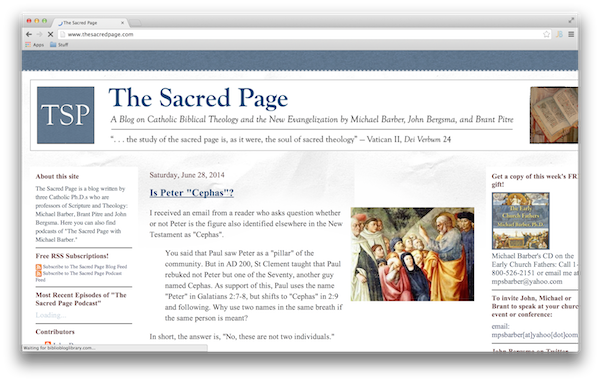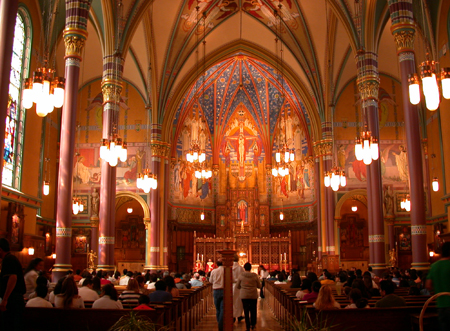Anonymous Gospels?

 This week I heard a talk on the Gospel of John by Dr. Michael Barber at Our Lady of Mount Carmel Church.
This week I heard a talk on the Gospel of John by Dr. Michael Barber at Our Lady of Mount Carmel Church.
In the early part of his talk, Dr. Barber discussed the question of authorship of the Gospel. He mentioned how modern sceptical scholars often say that the Gospel was originally anonymous, and that the text “The Gospel according to John” was a later addition. I have often heard claims such as these, so I was delighted to hear Dr. Barber present some potential problems with this position…
The main issue in asserting that the Gospel was original anonymous is that the manuscript evidence does not support this hypothesis at all. Where the manuscripts survive, we find the text present. Not only that, there are some other problems which flow from this…
If the original Gospel was anonymous and the association with St. John was a later development, why don’t we find divergent attributions? Since St. John is not identified as the author within the narrative itself, surely one would expect many divergent attributions to develop? Why was the Gospel never associated with, say, St. Peter? The obvious answer is that the text “The Gospel according to John” was in there from the beginning.
If the sceptics are right, the text had been copied as an anonymous Gospel and distributed throughout the Empire. Why is it that manuscripts from all these different regions bear the text claiming Johannine authorship? It would have been an impossible task to gather up all these different manuscripts retrospectively in order to “fix” them with an agreed-upon author, particularly since they were in different languages (Greek, Latin etc). Once again, the simplest explanation for consistency in all these manuscripts in all these areas in all these languages is simply that the text “The Gospel according to John” was in there from the beginning.
These reasons, coupled with the universal testimony of the Early Church Fathers, should give us great confidence that, from the very beginning, this Gospel opened with the words “The Gospel according to John…”
 Dr. Barber tests his son on the Faith…
Dr. Barber tests his son on the Faith…
 Last month,
Last month, 

